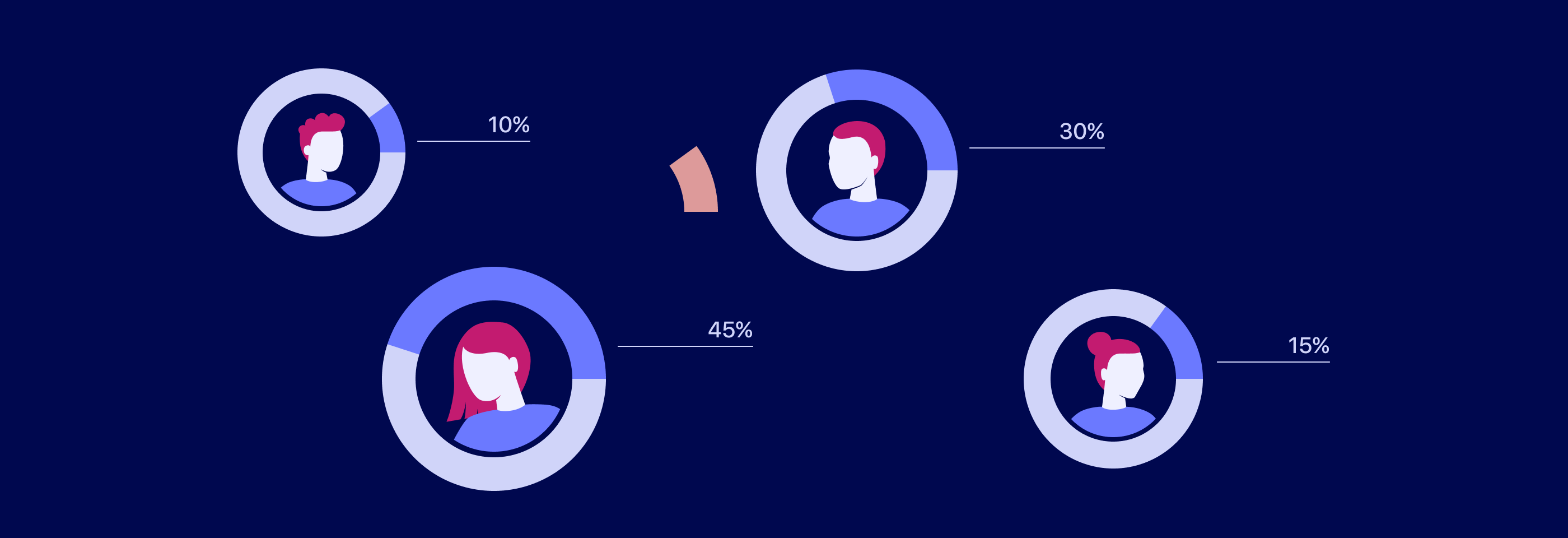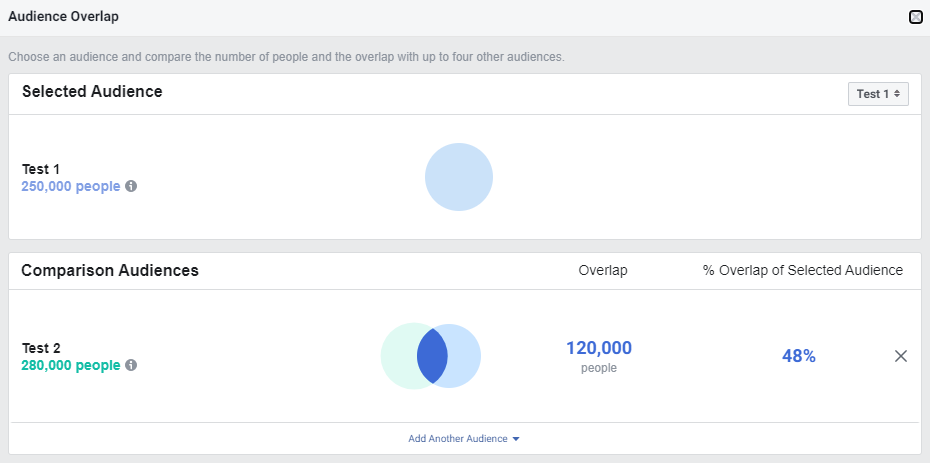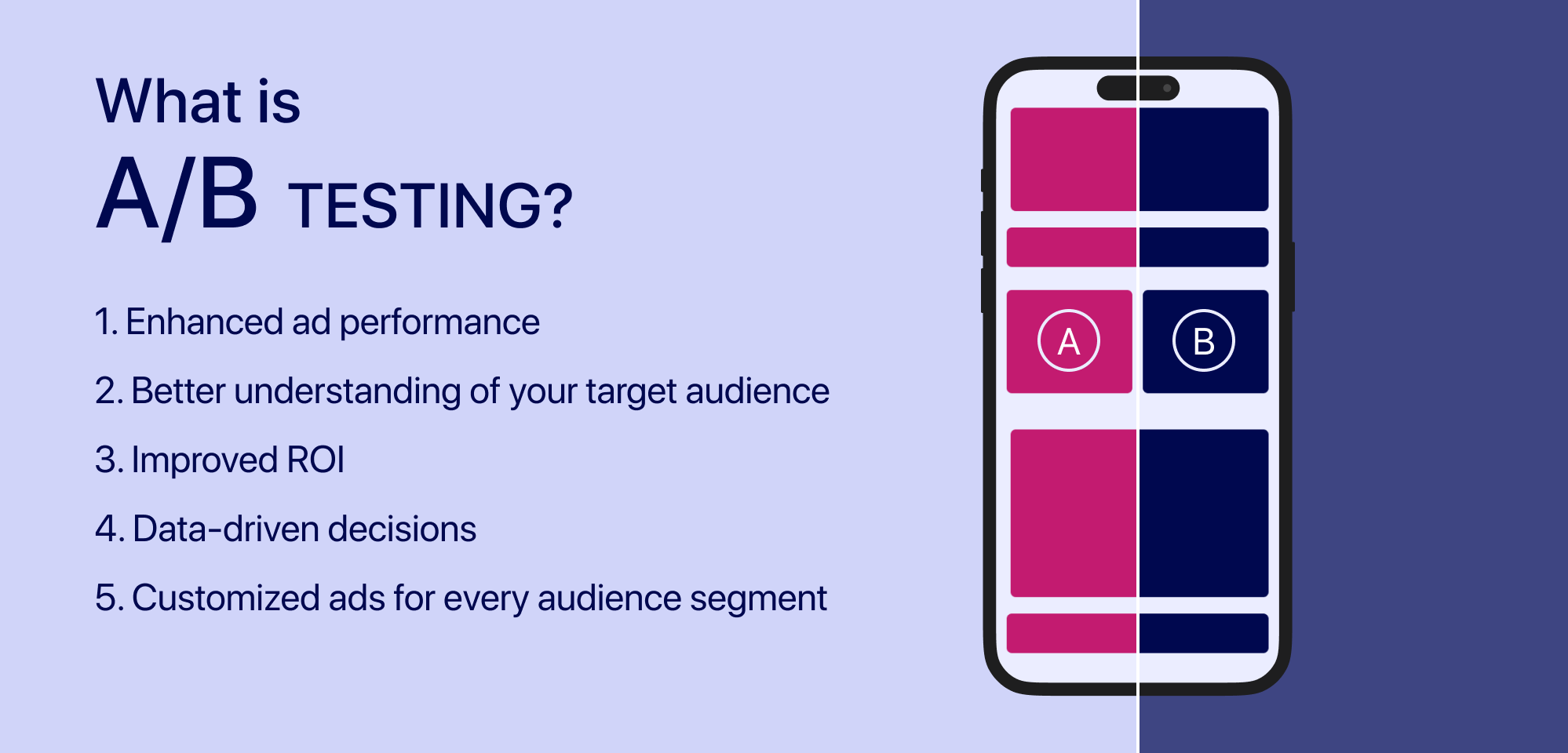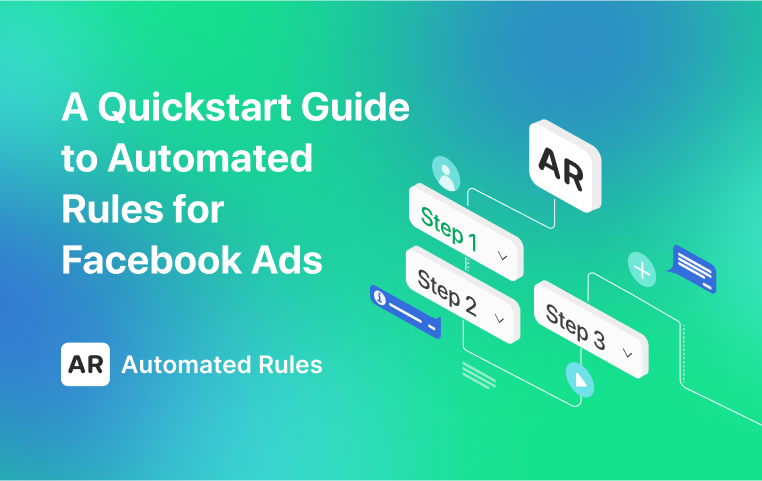Top Facebook Ad Mistakes: Why Ads Are Not Delivering
December 20, 2023
Let's discuss the most common pitfalls advertisers can encounter when running Facebook ads and how to deal with them effectively.

Imagine this scenario: you’ve spent plenty of time setting up your Facebook ad campaigns, hit the “start” button (figuratively speaking), and sit down to patiently wait for your conversion numbers to go up. But it doesn’t happen the next day, week, or even a month after.
Advertising is a complicated process that requires patience and consistent efforts to maximize the results or at least maintain them at optimal levels, and many advertisers experience problems with this at some point in their professional journeys.
In this article, we’ll discuss the most common pitfalls advertisers can encounter when running Facebook ads and how to deal with them effectively.
Let’s start with one of the most common mistakes people commit while advertising on Facebook.
#1 Wrong target audience
The chief purpose of advertising is to present potential customers with relevant offers and convince them to take the desired action. In a way, it’s all about establishing a connection between your audience and your business.
So, what does targeting the wrong audience look like? There are 2 main mistakes you can make when selecting an audience for your Facebook ad campaigns:
- Targeting an audience that is too broad: it can decrease the relevancy of your ads and increase the costs;
- Targeting an audience that is too narrow: it can lead to limited reach, increased ad fatigue, and reduced conversions.
In both cases, Facebook will usually show a warning message that your “ad set may get zero conversions/leads/etc.”, and you’ll know that it might be a good idea to re-examine your targeting choices.
The key to fixing these issues is finding the right balance between these two extremes.
This can be achieved by targeting users by demographics, interests, behaviors, devices, etc. to reach a more relevant audience while also leaving space for users who might potentially become your customers.
Another common culprit behind poor ad performance is the mismatch between the audience and your offers. When the expectations and needs of your potential customers don’t align with your offers, even top-notch ad creatives and huge budgets won’t save your ads from failure.
In this case, you can either work on your offers or change the audience you’re targeting. If you choose the second route, you’ll have to do your research and find groups of people who are more likely to become your customers.
Here’s how you can do it:
- Do proper research on your existing and potential customers to figure out what demographics, interests, behaviors, etc. they have in common;
- Choose which targeting filters to use based on the results of your research;
- Use custom audiences to engage users who’ve interacted with your business before (it’s crucial as ‘warm’ audiences are much more likely to convert);
- Use lookalikes to expand your current audiences and find new potential customers;
- Split test different audiences to find the groups of people who convert at higher rates.

Finally, if you’re running multiple ad sets at the same time, be mindful of the possibility of an audience overlap. It’s a situation when multiple ad sets or audiences you're targeting share a significant portion of the same users. When there's overlap, users may be included in more than one audience that you're targeting with different ad sets or campaigns.
This can lead to numerous problems, such as:
- Increased costs due to competition between your own ad sets;
- Ad fatigue as the same audience sees similar ads from multiple campaigns;
- Inefficient budget spending as you’re potentially bidding against yourself;
- Missing out on new, untapped audiences.

Luckily, you can always easily check whether you have this issue by checking the audience overlap percentage in your Facebook Ads Manager. You just need to proceed to the Audiences section in your Meta Business Manager, choose the audiences, and then see the results. Keep in mind that this can be done for audiences that include at least 10,000 accounts from the Accounts Centre.
 This is how the Audience Overlap results look like in Meta Ads Manager.
This is how the Audience Overlap results look like in Meta Ads Manager.
There are several things you can do if this percentage is high:
- Using custom audience exclusions to ensure that users from one campaign are excluded from another;
- Segmenting your audiences clearly for different campaigns to ensure that each campaign serves a unique purpose;
- Merging similar audiences into a single campaign to streamline targeting efforts and prevent unnecessary duplication;
- Scheduling your campaigns to minimize overlap and reduce the likelihood of fatigue.
By proactively managing audience overlap, you can maintain the effectiveness of your Facebook ad campaigns, optimize budget allocation, and deliver more personalized and impactful messages to your target audiences.
#2 Wrong campaign objectives
Another mistake you can make during the process of creating your ad campaign is choosing the wrong campaign objectives.
Picking the wrong goal will only lead you to waste your efforts in vain, which is why it’s so important to decide what you want to achieve beforehand and select the corresponding campaign objective.
Meta has recently simplified the available campaign objectives, so this is what you can choose from now:
- Awareness – corresponds to the original objectives of Brand awareness, Reach, Video views, and Store traffic;
- Traffic (this objective hasn’t changed);
- Engagement – corresponds to the original objectives of Engagement, Video views, Messages, and Conversions;
- Leads – corresponds to the original objectives of Lead generation, Messages, and Conversions;
- App promotion – corresponds to the original objectives of App installs;
- Sales – corresponds to the original objectives of Conversions and Catalogue sales.
If you’re not sure what objective from this list will be the best choice, these tips might be helpful:
- Consider the level of the sales funnel you want to reach;
For example, for top levels, it’s best to choose objectives with actions that don’t require too much commitment (like awareness, traffic, or engagement). For lower funnel levels and warm audiences, you can select objectives like leads, app promotion, or sales – these groups of people are more likely to be ready to take the next step in the relationship with your business.
- Get clear on the results you’re looking for;
While Facebook simplified the campaign objectives, it’s still important to know what you’re running your ads for to make the right choice. You can decide your primary goal based on these 3 categories: awareness, consideration, and conversion.
Do you want to make as many people as possible see your ads? Do you want them to visit your website? Install your app? Make a purchase? Answering these questions can help you not only better understand which objective will be the most appropriate one but also accurately measure the success of your ads.
- Be mindful of your resources;
When choosing an ad objective, it’s also important to consider your budget, resources, and the level of interaction you want with your audience. Some objectives may require higher ad spend, testing multiple creative assets or audiences, using custom audiences, and so on, which obviously can drive the costs up.
For example, campaign objectives that aim at the top levels of the funnel (like awareness or engagement) can cost less since it’s much easier to get users to see your ads or click on them than to make them convert.
Overall, if you’re able to choose the right campaign objective, you’ll have much higher chances of getting the expected results.
If you’re still unsure which objective will bring the best results for you, you can try the Advantage+ feature recently introduced by Meta. Advantage+ campaigns use machine learning to identify audiences that are most likely to bring you the desired results, simplify campaign setup and management, and a lot more.
For example, with Advantage+ Shopping campaigns, you can show your best-performing ad variations to the highest-value customers. All ad formats that you’re using will be brought together into one single campaign and used to target both potential and existing customers – different levels of your sales funnel at the same time will be covered with one campaign.
#3 Inappropriate budget & lack of control
If you want to not just start running your ads but also achieve the desired results with them, you have to be ready to invest some money and do it wisely.
But how to do it?
First of all, you’ll need to choose the type of budget. Facebook allows you to be flexible when it comes to choosing how you want to spend your ad budget, and you have two main options: a daily budget and a lifetime budget.
With a daily budget, Facebook will spend the exact amount you set each day, which means that you’ll always be aware of how much money you’re spending every single day. Basically, it’s much easier to control your budget when it’s set to spend daily. It’s also easy to change the amount you’re spending if there are some fluctuations in ad performance and a possibility of scaling.
On the other hand, choosing a daily budget also means that Facebook will spend the full amount you’ve set even when the results don’t justify it and you won’t be able to schedule your ads (i.e. your ads will be running non-stop).
With a lifetime budget, Facebook will change how much you spend daily based on ad performance, which means that you won’t be spending money in vain. Lifetime budgets are a much better option if:
- You know how much you can afford to spend in total and don’t want to go above this limit;
- You want to set the end date for your campaign;
- You want to run your ads on a particular schedule;
- You’re not planning on introducing any significant changes to your campaigns.
In short, each option has its advantages and drawbacks, and your choice will depend on how much flexibility or stability you need.
The next thing to be mindful of is the size of your budget. Setting a budget that is too low is another common mistake made by many advertisers, especially beginners.
Depending on the industry and country, Facebook can be quite saturated in terms of how many advertisers run their ads there. As Facebook uses the auction system for bidding, it means that if you’re not spending enough, you’re at a disadvantage. That’s why setting the appropriate budget for your campaigns is no less important than choosing the right ad creatives or target audience.
Of course, all advertisers want to spend as little as possible to get great results, but this scenario rarely happens in real life. Insufficient budget can limit ad delivery, prevent ads from leaving the learning phase, and even stop them from being served at all.
If you’re just starting your campaign, choosing a lower budget (but not too low) is justifiable. However, as your ads start to bring in results, it’s best to start increasing your budget gradually. This will help you discover the optimal costs-to-results ratio and scale your campaigns to improve it.
Remember, though, that the costs of your Facebook ads can differ a lot based on factors like industry, country, audience, placements, and so on. Take that into account and plan accordingly when setting your budget.
Finally, don’t forget to keep your spending in check and adjust your budgets and bids when it’s called for. For example, you can check what ads generate the most clicks or the highest CTR and allocate more budget to them.
To make sure that you don’t overspend while scaling your ads, consider setting automated rules: they can help you automatically raise or decrease the budget depending on how well an ad performs within a specific timeframe.
For better results, try using AutomatedRules – our tool is the perfect option for advertisers that seek to manage their ad performance and budget spending more efficiently without additional effort.
#4 Weak ad creatives
Ad creatives, which include visuals, copies, CTAs, and other elements of how an ad is presented to users, are one of the most important ingredients in advertising success.
It’s important to start with the fact that in online space, the foolproof way to get users’ attention is striking imagery: the first thing people tend to notice about ads are visuals, and only then headlines and CTAs. Visuals (i.e. pictures and videos) will be responsible for the first impression your ads leave on your audience, and you don’t want to ruin it, right?
Here are several issues that you can run into when working on your ad creatives:
- Too much text
Text-heavy ads are too difficult to be quickly scanned by the human eye, and if there’s nothing visually stimulating, people will scroll past them – out of sight, out of mind.
To make it easier for your customers, keep the textual elements of your ads to the minimum: a concise ad copy and a matching short CTA will be more than enough to get the point of your offers across to your audience. If you’re not sure how to do it right, check out our articles on how to write killer copies and high-converting CTAs for your ads.
- Bland colors
Minimalism might be a huge trend these days, but applying it in advertising is not a good idea. Bright colors are proven to increase the visibility of an ad, and using colors that look bland and boring will produce the opposite effect.

This doesn’t mean that you should go for neon colors and bizarre palettes to attract the attention of your potential customers. It’s necessary to pick colors that suit your brand image and correspond to the palettes used on your landing pages – this will create an overall impression of your brand and make it more memorable.
- Poor quality visuals
There’s nothing that can ruin the image of a brand and take a toll on its credibility more than ad visuals that look cheap and unprofessional. This includes visuals that resemble stock images and videos, visuals that look like they were quickly done by some amateurs, and outdated visuals that don’t match the preferences of your audience in the slightest.
If you don’t want to tarnish your brand image with bad visuals, make sure that you put enough effort into working on them. Whether you choose to go with real-life photos and videos or digitally designed visuals, it’s crucial that they look clean, match the standards within your industry and your audience’s tastes, and visually distinguish your ads from other content.
The key here is knowing your customers and what kind of ad creatives work best for them. But how to figure this out?
This brings us to the next common mistake.
#5 Neglecting A/B testing
Knowledge is power, and when it comes to advertising, the best source of knowledge is experimentation. It allows advertisers to get objective data about what works and what doesn’t, and there’s no better way to do it than A/B testing.
A/B testing, or split testing, is used to compare 2 versions of an ad to determine which one performs better and identify which elements contribute the most to the ad’s success.
If you’re running campaigns without testing different ad versions, you might be missing out on many insights that could help you make your ads more successful. Perfect may be the enemy of the good, but the ever-changing advertising landscape makes it imperative to be in touch with customers’ expectations and market trends if you want your brand to stay relevant.

A/B testing allows you to do just that – discover what can improve your ad performance and deliver better results.
Here’s how you can do A/B testing the right way:
- Choose one variable to test
If you want your investigation to produce reliable results, select only one element to test at a time. For example, it could be ad copies, visuals, headlines, CTAs, audience segments, and so on.
- Create variations
Once you determine which variables to test, you’ll have to create two or more versions of the ad, each with a distinct change in the chosen variable. For example, if you’re testing the ad copy, you might create two versions with different headlines or messaging.
- Set up an A/B test in Facebook Ads Manager
If you think that split testing sounds too complicated, don’t worry – you’ll get a hang of it in no time. Besides, the good news is that you can run your tests right from your Facebook Ads Manager. This allows you to do testing formally and ensure that your audiences are evenly split and results are reliable.
There are 2 ways to run A/B tests: 1) you can duplicate an existing campaign, ad set, or ad and change a variable or 2) you can compare two existing campaigns or ad sets. It’s recommended to use the same budget for both ad variations for accuracy.
- Run the test and analyze the performance
After you create your ad variations, you can start testing. Your ads should be running either for a predetermined period or until they reach a statistically significant number of impressions or engagements – this will indicate that the results you get are statistically significant.
When the test is finished, you can compare your ad variations based on their performance metrics: CTR, conversion rates, engagement, and any other relevant KPIs. They’ll help you identify which variation performed better based on your campaign objectives.
- Optimize based on results
The next step of A/B testing is using the insights you’ve got to level up your advertising strategy, or optimizing your ads based on them. If you see that one variation outperformed the others, you can replicate this success with your future ads by using the elements that were responsible for it.
Keep in mind that running just one A/B test is not enough if you want to keep improving your ad performance. Testing is a continuous process, and regular experimentation will help you stay up-to-date with the evolving tastes and preferences of your customers and current advertising trends within your industry.
#6 Setting and forgetting your ads
The last mistake we’re going to address in this article might be one of the gravest – essentially, it can lead to failure even if you manage to avoid all other mistakes.
Running ad campaigns is a bit like tending to a garden: if you stop taking care of it, you might discover that all of the beautiful flowers and trees you planted have withered away. Between creating engaging and relevant ads for the right audience and enjoying the fruits of your labor lies the difficult process of monitoring and improving ad performance. Ad creation is just the first step – the rest comes after.
Here are just a couple of reasons why consistent performance tracking and optimization is crucial for your success:
- Changes won’t disrupt your ads’ growth
The platform’s algorithms, user behavior, and your competitors’ strategies are constantly changing, and these changes can have a big impact on your ad performance. Keeping an eye on the most important KPIs can help you spot the significant changes in how your ads perform and check what you can do to avoid potential losses.
- You’ll manage your ad budget more efficiently
We’ve talked about the importance of setting an appropriate budget for your ads, but it’s also crucial to avoid spending too much on ads that don’t perform well and scale the ones that deliver good results. This will help you get an optimal ROI and justify your expenses.
- Your audience won’t get bored by your ads
Displaying the same ad to your audience over and over again can quickly lead to ad fatigue, which obviously doesn’t help ad performance at all. Users can grow tired or annoyed with your ads, resulting in a decline in the results you get.
Regularly refreshing or changing your ad creatives helps to combat ad fatigue and keep your audience interested and engaged, but you can detect it only by keeping track of your ad performance and how it changes over time.
In summary, active management and optimization are crucial for maintaining an optimal level of ad performance and making improvements.
The good news is that this can become much easier and less time-consuming with AutomatedRules, our tool for automating ad management. With it, you can instantly optimize your ads based on their performance: pause or decrease the budgets for unprofitable ads, scale or duplicate ads that perform well, and a lot more.
For example, you can increase the budget by 15% daily if your campaign has generated more than 5 sales in the past week and had an optimal CPA. To prevent overspending, you can set a maximum budget cap (e.g., $1000). The campaign won’t be scaled further once the budget reaches its maximum value.
Here’s how this rule will look on AutomatedRules:

There are many kinds of rules that you can create to manage your Facebook ads properly, and you can check out our video guides to see some of them. If you’re ready, you can start automating your ads with AutomatedRules today and ensure you get the most out of them.
Conclusion
This is by no means an exhaustive list of mistakes you can make when creating and executing your Facebook ad campaigns, but being aware at least of the ones we’ve discussed so far is already a good start.
Now that we’ve talked about what you shouldn’t do and how to avoid doing it, it’s time to check the list of things you should be doing if you want to run successful ad campaigns on Facebook:
- Researching your audience and using the right filters or features to target it;
- Ensuring that your chosen campaign objective corresponds to your primary advertising goal;
- Setting the ad budget that will be sufficient for your campaign and allow you to reach your goals;
- Choosing appealing visuals, engaging copies, and actionable CTAs for your ads;
- A/B testing different ad elements to find the winning combinations;
- Keep an eye on the ad while it’s running and be ready to make changes if needed.
By doing all of this, you’ll be able to not only avoid various issues we’ve described in this article but also scale your ads and take them to a new performance level.
